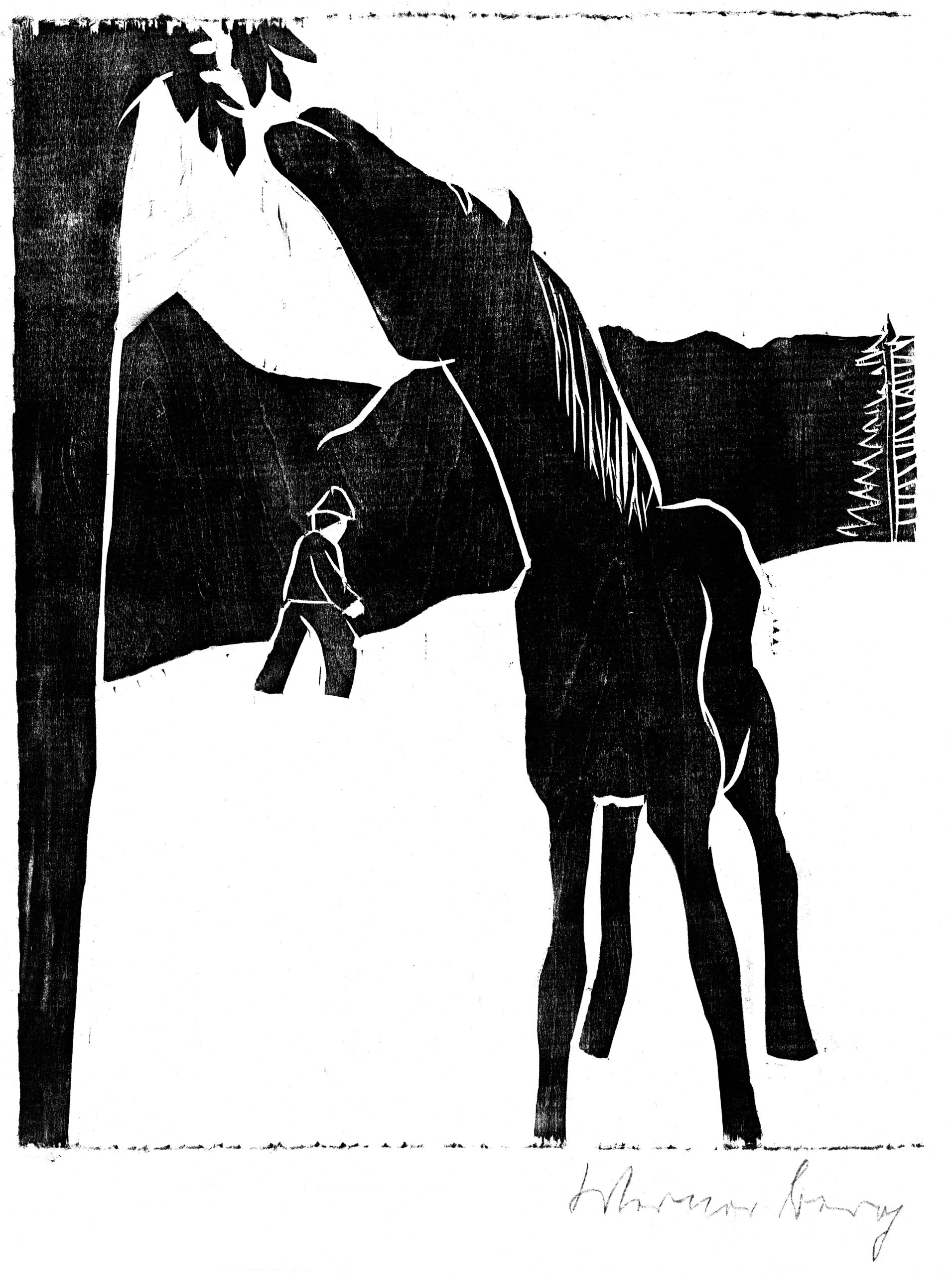Horse feeding from a tree

Generally Werner Berg used linden or spruce wood for his woodcuts. He carved the side-grain wood using a gouge. Each individual print was made by hand: the artist pressed the Japan paper against the woodblock using a rubbing tool. Using this technique, he was able to print the black surfaces in varying degrees of intensity, giving them a animated vibrancy. Werner Berg said of his woodcuts: “Pure black and white appears to me in graphic work as the reaction of the painter. It is not only the negation, but also an intensification of color. I also believe that the possibilities offered by pure black and white are inexhaustible, and for me that was an especially important reason to stick to the woodcut. It corresponds to my life: from the growing tree to the wooden board and the printing process, I have everything in my hand. I am continually astonished at the possibilities that a long life and consistent work offer.”
This woodcut shows, in foreshortened perspective, a horse with its head raised to the leaves of a tree. A male figure strides through the background, which is defined by a hillside and a fir tree. The tree, the horse, the mountain and the human figure are black surfaces of fully equal value. The animal and the human are not accessories in a landscape, and likewise, the tree and the mountain are not purely a decorative background. Thus the black block formed by the horse is not isolated, but indivisibly linked to the world as a whole.
The points of departure for Werner Berg’s depictions were always small drawings, the “sketches” that he jotted down, often in a only a few seconds, on his wandedsrings to markets and religious festivals and in the cemeteries, villages and towns of Lower Carinthia, or the immediate vicinity of his farm. In these “sketches”, he succeeded in reproducing his immediate visual experience as directly as possible. For his work in its entirety, the importance of this means of form-finding cannot be overemphasized. Using the sketch, he was able to make seamless contact to the world of images found in the agrarian microcosm.